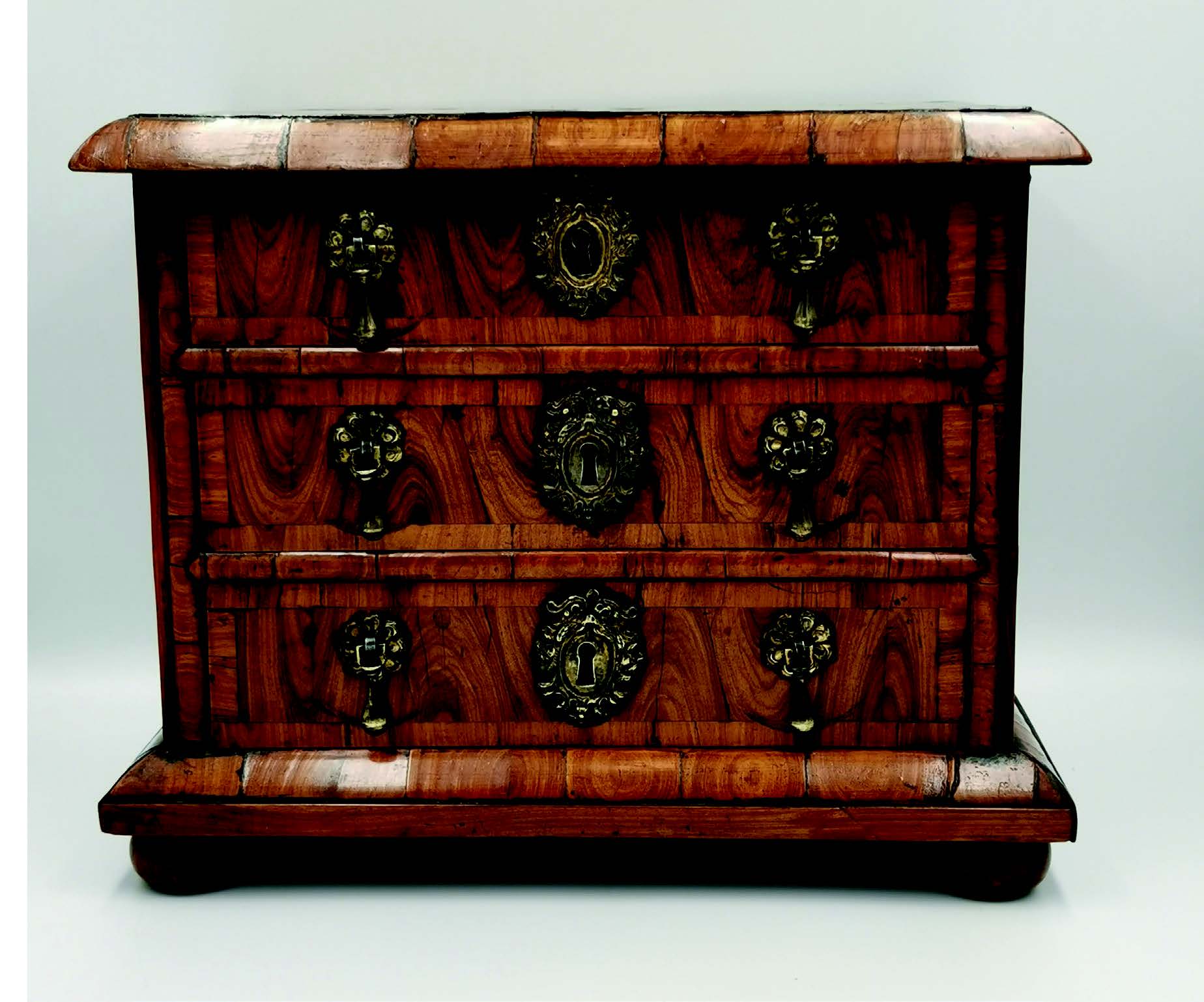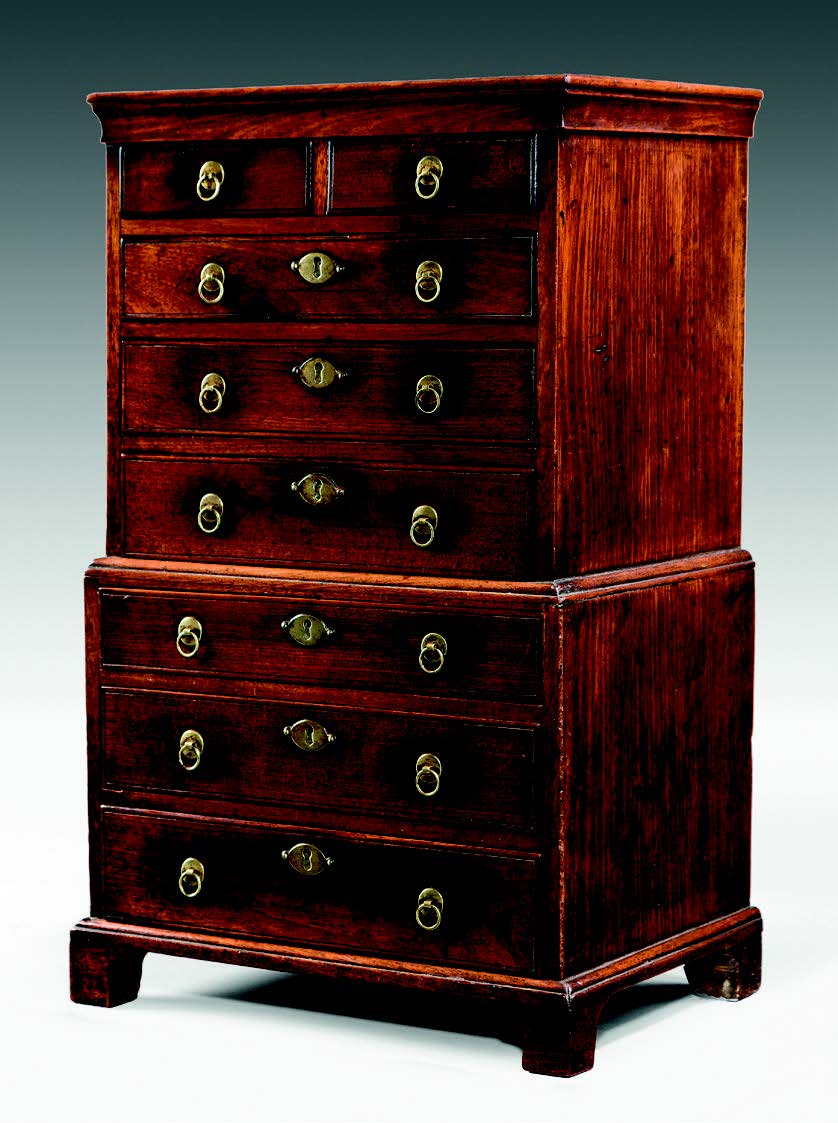Miniature antique furniture – Basic, Better, Best
Lennox Cato presents his version of the BBC Antiques Roadshow’s ‘Basic, Better and Best’ with stunning examples of miniature antique furniture
As a young dealer when I showed a recently purchased piece to one of my peers, I would receive either a straight “yes” or “no”. Very little haggling went on – unless it was a “no”, and you were then told why. So that was how I learnt – the hard way through my pocket.
Back then, with limited access to information on antiques, it was the real life version of ‘Basic, Better and Best’.
I have selected three excellent examples of miniature pieces of furniture. None were apprentice pieces, but made by top-quality cabinetmakers of the time and would have been used to show potential clients what a finished article would look like. Two of the chests are made of solid mahogany, while the other is veneered.
1. EARLY 18TH CENTURY, C. 1700
 The piece is different from the other two as it is veneered as opposed to solid wood. The chest of drawers is supported on solid, squat bun feet which emphasise the Dutch influence of the William and Mary period.
The piece is different from the other two as it is veneered as opposed to solid wood. The chest of drawers is supported on solid, squat bun feet which emphasise the Dutch influence of the William and Mary period.
The three, long drawers each have original peardrop handles, pressed back plates, cast escutcheons and steel locks. The drawers are framed with a D-shaped moulding which is also veneered. The drawers, as like the other examples, are oak lined. The ends and top are oyster veneered in a pattern formation.
2. 18TH CENTURY, C. 1780

Here we have another solid mahogany chest on chest, but this one is made in two parts and is narrower in depth to the previous one. It retains a moulded cornice which sits above two short drawers over three long, graduated drawers, all of which are oak lined with cock beaded drawer fronts.
Once again, the drawers all retain the original circular brass ring handles with solid brass back plates. The escutcheons again are original but are more elaborately cast than the previous example. The steel locks are also original, and all are in working order.
The lower section of the chest has three long drawers over the original bracket feet.
3. 18TH CENTURY, C. 1780

The solid mahogany chest on chest retains the original back boards, made of oak. The drawer linings are also oak which you would expect to find on an 18th-century piece. It also has fine dovetailing and the original brass penny ring handles with solid brass backplates. The locks on the drawers are all working and original. The upper section has a moulded cornice, below which are two small drawers over three long graduated drawers.
The lower section has three long graduated drawers. Note how the sides all follow through, so the cabinetmaker wanted consistency when viewing from either angle. This one-piece chest on chest is supported on the original bracket feet. All in all, everything is original on this item which is something we all like to see in a piece of any size.
‘Basic, Better and Best’ – The Conculsion
Basic: Number 1. This is ‘basic’, mainly because it is made in one piece. While there is as much detailing, the proportions are not quite as elegant.
Better: Number 2. This two-section chest on chest has more detailing than the first. Its cock beaded drawer fronts and the escutcheons are more decorative, suggesting the maker took more time.
Best: Number 3. The oyster veneering is rare and would command a higher value. Its quality suggests the workshop of Thomas Pistor of Ludgate Hill. The wood used is a very rare exotic timber called kingwood (also known as princes wood), which on this chest of drawers has been cut into oyster veneers. This is uncommon on miniature articles, as kingwood, due to its rarity, was a very expensive material and was only used on high value pieces.
Lennox Cato runs the Kent-based antiques dealership Lennox Cato Antiques as well as being a furniture specialist on BBC Antiques Roadshow.


